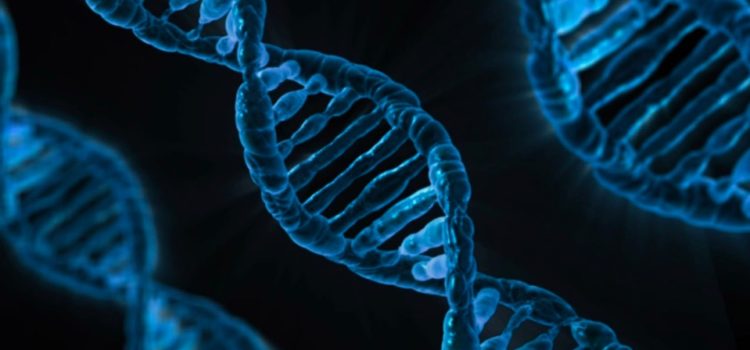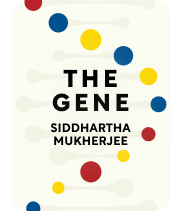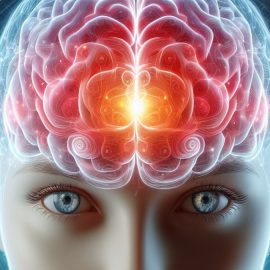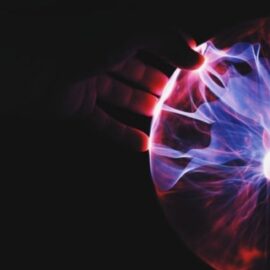

This article is an excerpt from the Shortform book guide to "The Gene" by Siddhartha Mukherjee. Shortform has the world's best summaries and analyses of books you should be reading.
Like this article? Sign up for a free trial here.
How do genes work? How are genetic instructions stored in the DNA?
DNA encodes the genetic information that determines how an organism will develop. From the color of your eyes to your temperament, genes carry information that makes you who you are. So, in a very real sense, your genes contain the blueprints for your body and, to some extent, your personality.
Here’s how genes work, explained in simple terms.
DNA’s Four Nucleotides
DNA contains instructions for building the proteins that make up just about everything in our bodies. DNA itself is made of four base chemicals called nucleotides: adenine (A), cytosine (C), guanine (G), and thymine (T). All genes, regardless of species, consist of those four nucleotides in various combinations. Nucleotides have two key binding sites that make them perfect for creating chains of DNA: One site at the “bottom” of the molecule where the next nucleotide attaches itself, and one that binds to the other DNA chain of the double helix.
(Shortform note: Some virus genomes are made of RNA, not DNA, a fact that Mukherjee himself puts in a footnote much later in The Gene. However, DNA is a more stable molecule than RNA, and it’s easier to repair in case of damage. That’s why nearly all life on Earth has evolved with DNA. In theory, there could be complex multicellular organisms with RNA genomes, but so far, no such species has been discovered.)
In 1953, molecular biologists James Watson and Francis Crick—using data from another scientist named Rosalind Franklin, who went uncredited in their paper—developed the first accurate model of DNA, the now-famous “double helix” model.
While creating that model, Watson also discovered that the four nucleotide bases are actually two pairs: T is always linked to A, and C is always linked to G. That happens because those nucleotide pairs chemically bond to one another and thereby hold the DNA molecule together.
Genes Switch On and Off
Every cell in an organism’s body contains a set of that organism’s genes; in fact, each of its cells has identical DNA. This is logical, since every organism starts out as a single cell (a fertilized egg) which then replicates itself countless times. However, that seems to imply that all of its cells should be the same, which clearly isn’t the case. One cell becoming skin while another becomes bone or brain tissue is a matter of activating and deactivating certain genes at certain times.
To illustrate the point, Ed Lewis—a geneticist working with fruit flies in the 1950s—discovered that some rare mutations would lead to flies having wildly different body structures, such as a leg growing out of the head. He concluded that there must be genes regulating when and how other genes are expressed, which he called effectors. Errors in those effectors led to the mutations he was observing: For example, one such mistake might activate the “grow antenna” genes in cells on the fly’s thorax.
| How Do Genes Work?—Genes Function Like Computers Gene regulators—Lewis’s “effectors”—come in two types: Activators begin or increase protein production by binding to sites called enhancers. Repressors slow or stop protein production by binding to sites called silencers. Furthermore, any given gene can have multiple enhancers and silencers that work under different conditions. This actually allows cells to carry out basic if-then programming, like microscopic computers. For example, E. coli has a relatively simple operon (collection of related genes) that helps it break down lactose for energy. However, there are two regulators controlling when that operon activates: The lac repressor normally blocks this operon, but turns off in the presence of lactose. The catabolite activator protein activates this operon when levels of glucose (E. coli’s preferred food) are low. So, this operon’s if-then statement would be: If lactose is present, and glucose is not present, then produce lactose-digesting enzymes. |
How Genes Create Proteins
The process in which DNA creates functional proteins is intricate and involves many different enzymes (proteins that aid chemical reactions). However, Mukherjee describes the process in two broad steps:
1. Transcription. Enzymes read the DNA “blueprint” and create a matching RNA molecule of the genes to be translated into proteins.
(Shortform note: This step is crucial because only a small part of your genome gets transcribed into RNA at a time. If your cells read your DNA directly and made proteins based on that, they could end up trying to create an entire genome’s worth of proteins at once.)
2. Translation. Other enzymes read instructions encoded in the RNA molecule, retrieve the needed amino acids (simple organic compounds that make up proteins) from the blood, and assemble them into proteins.
(Shortform note: There are a total of 20 amino acids that, when put together in various combinations and shapes, create countless proteins. Of those 20, nine are considered essential amino acids because our bodies can’t produce them. In other words, they’re essential parts of our diet, because the only way we can get those amino acids is by breaking down proteins from other organisms that produce them. Perhaps the best-known essential amino acid is tryptophan, which is found in turkey (among other sources), and is supposedly responsible for the post-Thanksgiving drowsiness many people experience.)

———End of Preview———
Like what you just read? Read the rest of the world's best book summary and analysis of Siddhartha Mukherjee's "The Gene" at Shortform.
Here's what you'll find in our full The Gene summary:
- What genes are and how they work, explained in simple terms
- The history of gene discovery, dating back to the 1800s
- What the future of genetic engineering looks like






